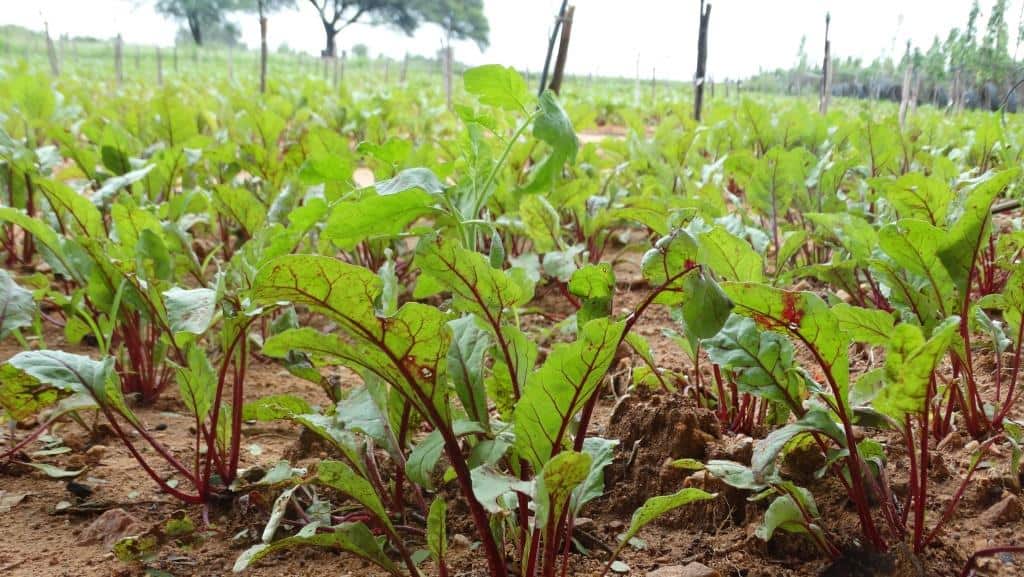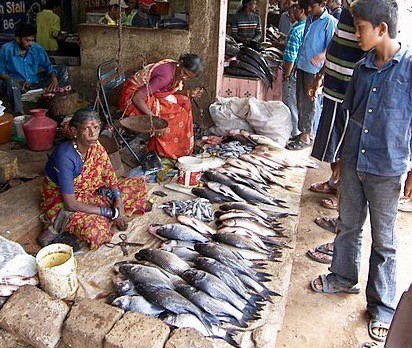How often have we thought about how safe our food is or how sustainable our food practices are? What regulations exist to make our food secure? Who is enforcing these regulations, and how efficiently?
Everyday food is often laced with pesticide residues, as shown by the crippling attack of arthritis in over 300 people in Shimoga and Chikmagalur districts. In another instance, excessive levels of poisonous fungi were found in flour sold in parts of Karnataka. The fungi could cause a range of disorders – from jaundice to gastrointestinal bleeding.
Besides, India already faces a triple burden of malnutrition due to inadequate calorie intake among a large section of the population, obesity among another section, and pervasive micronutrient deficiencies. Fluctuations in food prices change the spending pattern and consumption of the poor, who are forced to buy poorer quality food or to settle for a diminished diet, continuing the cycle of undernutrition.
A comprehensive regulatory framework is urgently needed, to prevent exploitation of both producers and consumers, especially in cities where citizens are totally reliant on market sources. This must be in tandem with efforts to diversify and increase food production.
Regulations and enforcement are centralised
Currently, regulations on food are prescribed by the Food Safety and Standards (FSS) Act, 2006. And these are implemented and enforced by the Food Safety and Standards Authority of India (FSSAI), a central body under the Ministry of Health and Family Welfare.
All food labs across India have been brought under the Indian Food Laboratory Network (InFoLNet), a centralised digital management system. Besides, the centre is implementing a ‘one-nation, one-food-safety-law’, which prescribes common standards for implementation, compliance and enforcement of regulations.
But this centralised approach cannot provide continuous monitoring of food. Nor can it accommodate local techniques in food production or fully involve various stakeholders.
Given our country’s diversity in agriculture production and food habits, food regulations should be decentralised, and local bodies should be included in the monitoring of producers and consumers. This would help strengthen community networks and institutions too.
No incentive to grow local crop varieties
Food habits are influenced by factors like geographical location, socioeconomic status and religious views. Farmers tend to grow crops that form the main diet of a particular region. But crops before harvest are also included as ‘food’ under the FSS Act, and hence farmers come under the purview of the central regulations.
These regulations do not consider productivity and land quality, the type of soil or other factors essential for the growth of a particular crop across various regions. If the regulations on a specific crop (especially if it’s grown in fewer regions) are more technical and call for stricter compliance, farmers would default to crops that are easier to grow and transport as per regulations.

Centralised regulations promote production of crops that are easier to grow and transport. Pic: Shree D N
That is, the centralised, uniform set of standards and regulations gives no incentive to farmers to grow local crop varieties. This has led to increasing homogenisation of crop production.
How can local regulations help?
Local bodies like panchayats are traditionally assigned functions related to ‘neighbourhood’ public goods like sanitation and water supply. Food, being an immediate need sourced mainly from local, informal vendors, should hence come under the head of ‘neighbourhood’ public good, and should be regulated and monitored with the help of local bodies.
Local regulations and implementation can also lead to increased interaction between stakeholders like farmers, traders and consumers. As a result, regulations can be tailored for the diverse socio-economic characteristics of municipalities.
It can also allow pooling of resources including information, and encourage the innovation and spread of more artisanal production techniques, which are currently restricted by the centralised regulations.
Is this doable for BBMP?
Take Bengaluru. Section 247(1) of the Karnataka Municipalities Act, 1964, authorises a Municipal Commissioner, Chief Officer or any person authorised by the Council to inspect markets and other places used for the storage and sale of goods. The section also gives the authority powers to seize goods that are harmful or adulterated.
Additionally, BBMP’s functions include orderly development of the city with respect to health, hygiene, licensing, trade and quality of life. Since food is a fundamental and immediate aspect of life, its regulation and monitoring would fall within BBMP’s core functions.
Involving local bodies like BBMP would:
- Make the process of approving products easier
- Allow for more frequent checks and monitoring
- Allow negotiation and mediation between various stakeholders as per local customs
BBMP should monitor raw food and vendors too
Urban local bodies can also widen the scope of their monitoring, from restaurants to raw foods and vendors. BBMP already conducts raids on restaurants and resto-pubs for unhygienic food, and has decided to conduct such raids at least twice a week. Expanding upon these functions, BBMP could examine raw produce before it makes its way to consumers’ houses.
For example, in fish markets in Bengaluru, formalin may be used to increase the shelf life of stock. FSSAI conducts checks only twice a month, but new stocks of fish enter markets every day and are being sold without adequate checking.

HAL fish market. Checks on fish quality need to be more frequent. Pic: Rajesh Dangi, Wikipedia
If checks can be done at least once a week, it would be more effective for the FSSAI to work alongside the BBMP. Currently, BBMP can only give or cancel licenses once FSSAI finds formalin. But if BBMP is allowed to conduct its own checks as well, the monitoring system would be more efficient. FSSAI could also then improve its food safety knowledge through increased access to data collected by BBMP.
Besides, BBMP would be better-equipped than FSSAI to conduct regular checks on the Public Distribution System (PDS). Thirty seven per cent of poor households obtain food from the PDS, where adulteration abounds. Examples are the adulteration of spices sold in an open, powdered-form, where the adulterants may even be carcinogenic; or the adulteration of milk, leading to undernutrition.
Restrictions in reporting unsafe foodCurrently, the onus is on ill-informed consumers to report any infraction by vendors, to the Food Safety Department. And this is to be done through an online portal. This makes the system reliant on the information of a few individuals with the knowledge and resources to report violations. To better involve consumers in food regulation, targeted programmes for public participation and consumer education should be initiated, as was done in the US by the Food and Drug Administration (FDA) in 1985. Under this programme, information was given on nutrition labelling, on food safety in the home, on the administrative procedures of the FDA, and so on. |
Environmental concerns
The current regulations also show a poor understanding of the environment. Centralised systems increase the travel distance from the field to the marketplace. This is because the nearest FSSAI centre for food testing would be farther away than the nearest local regulator, especially in rural areas. This results in the planting of only those crops that can be easily transported and stored for longer periods of time.
Read: Where does Bengaluru get its vegetables from?
Decentralisation essential for sustainable, efficient food system
Given these, FSSAI’s functions should be restricted to prescribing a structure, coordinating, and facilitating work, while allowing state authorities to set regulations that are specialised to their regions. Local bodies like BBMP can strongly enforce these regulations and can use their judgment to declare whether a food product is safe.
A centralised system is also incompatible with the Agricultural Produce Market Committee (APMC) system which is supposed to prevent exploitation of farmers by their creditors. APMC Acts of different states have significant differences in commodity coverage and in the extent of powers of agricultural marketing boards. Differentiated and localised regulations would ensure there are no discrepancies in terms of commodities covered by the APMC Act of that particular state.
Furthermore, APMC Acts allow state governments to involve local governments in the process of regulation. The Karnataka Agricultural Product Marketing (Regulation and Development) [APM] Rules, 1968, under Section 92(1), empowers panchayats to check for licenses of sellers, to supervise sale, delivery, and other matters, thereby allowing a certain level of decentralisation. Section 91-A also looks at contract farming – ensuring through specific, localised rules – that farmers are not exploited.
To conclude, for a food regulation system to be efficient and environmentally sustainable, the regulations should be decentralised. Such regulations will also be region-specific and more accessible to all stakeholders.
Also Read:
Fruits and vegetables: Organic choices for consumers in Bengaluru